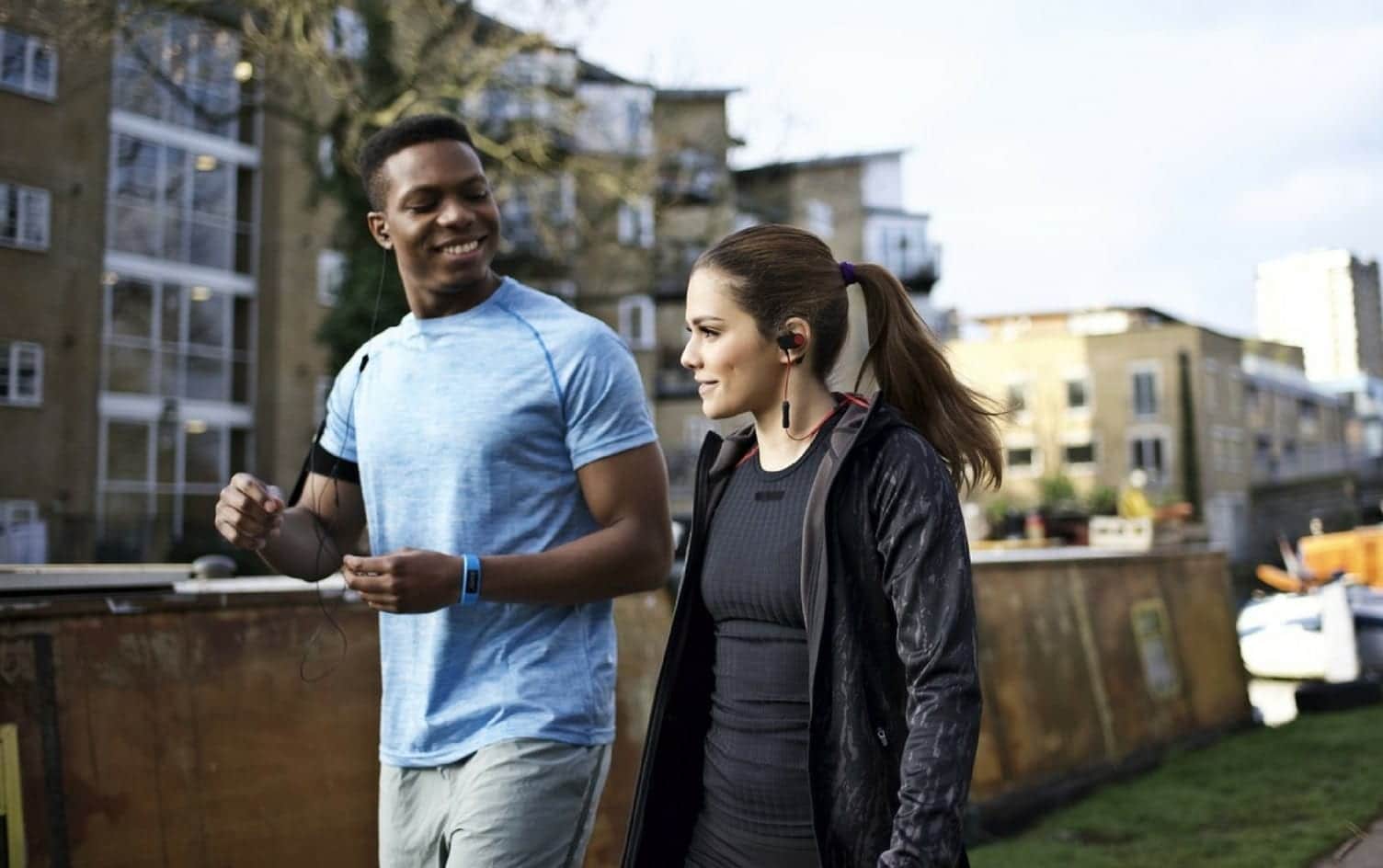Any time you begin a new activity like fitness walking, you’re bound to have a ton of questions that need to be answered. From whether or not you need to worry about proper technique to how to stay motivated, here are eight good-to-know tips before you begin:
FORM MATTERS
Like all other sports, using poor form can result in injury and hinder performance. Before you begin a walking program, you’ll need to learn the basics of posture, arm swing and stride. These tips are a good place to start:
- Keep your shoulders back with your head and neck in correct spinal alignment.
- Push off with the toes on your rear foot.
- On foot strike, roll from heel to the ball of the foot.
- Try not to over-stride and take shorter, quick steps instead.
- Swing your arms from the shoulder, keeping your elbows close to your sides.
WALKING SHOES ARE A GOOD IDEA
While workout clothing and other accessories aren’t necessary unless you want them, dedicated walking shoes are recommended. This is due to the difference in foot strike walking when compared to running or other fitness activities.
For instance, running shoes often have a higher heel-to-toe ratio, while walking shoes should be flat and not have much difference in height. Walking shoes also have less cushion than running shoes and should flex at the forefoot instead of in the midfoot.
TREADMILL WORKOUTS MAKE YOU STRONGER
Some runners absolutely despise the treadmill. And while it can be boring if you do it too often, mixing up your workouts indoors can be a good idea. You’ll get to control your incline, see how fast you’re going when you decide to add speed for interval workouts and even practice retro walking to build quad strength. During the summer and winter, treadmill walking can also be a good way to escape extreme conditions that can limit your workout time.
YOU NEED TO CHALLENGE YOURSELF
Just because you’re walking doesn’t mean your workouts should be easy. To lose weight and build fitness, it’s important to challenge yourself during your workouts. Setting distance goals to push yourself to walk further, including intervals to build speed or using hand weights for resistance training are good places to start.
Buying a pedometer or fitness wearable or downloading MapMyWalk can also help you keep track of calories burned and step counts, which can also be good metrics to keep track of when you’re looking to beat your previous workout marks.
CHANGE YOUR SURROUNDINGS
One of the good things about walking is you can do it anywhere. To keep from getting bored or burned out mentally, it’s good to switch up your scenery instead of sticking to the 22-minute walk around your neighborhood. Head to a local hiking trail, a nearby park or a high school track to mix things up and keep your workouts from getting stale.
A WORKOUT PARTNER IS A NECESSITY
When your workouts get hard, one way to push the pace and not think about the pain is to distract yourself. Having workout partners, especially one who is faster than you, is one way to do it. They can provide encouragement, motivation and good conversation — the latter of which can be useful as you start to build your mileage.
If you don’t have a workout partner or two, audio books, music or podcasts are other alternatives that can help keep you from getting bored or when you just need something else to think about besides the road ahead.
WALKING IS GOOD FOR YOU, EVEN IF YOU HAVE A HEALTH CONDITION
Whether you have diabetes, arthritis or heart disease, walking can be an ideal option to improve your overall health because of its low impact and a low-to-moderate intensity. It can also help prevent many health conditions such as breast and colon cancer, obesity, osteoporosis and stroke. All you need to do is get outside and walk at least 30 minutes a day.
IT’S NEVER TOO LATE TO START
Whether it’s running, cycling or jumping in the pool, many people worry about their age when beginning a new activity. While you still may be able to do those activities listed above, walking is one sport you will never get too old for. In fact, there are studies that show beginning a consistent walking routine after the age of 55 can prolong your life and reduce the need for some medications. It also helps increase bone density, which can become a problem as we age.




